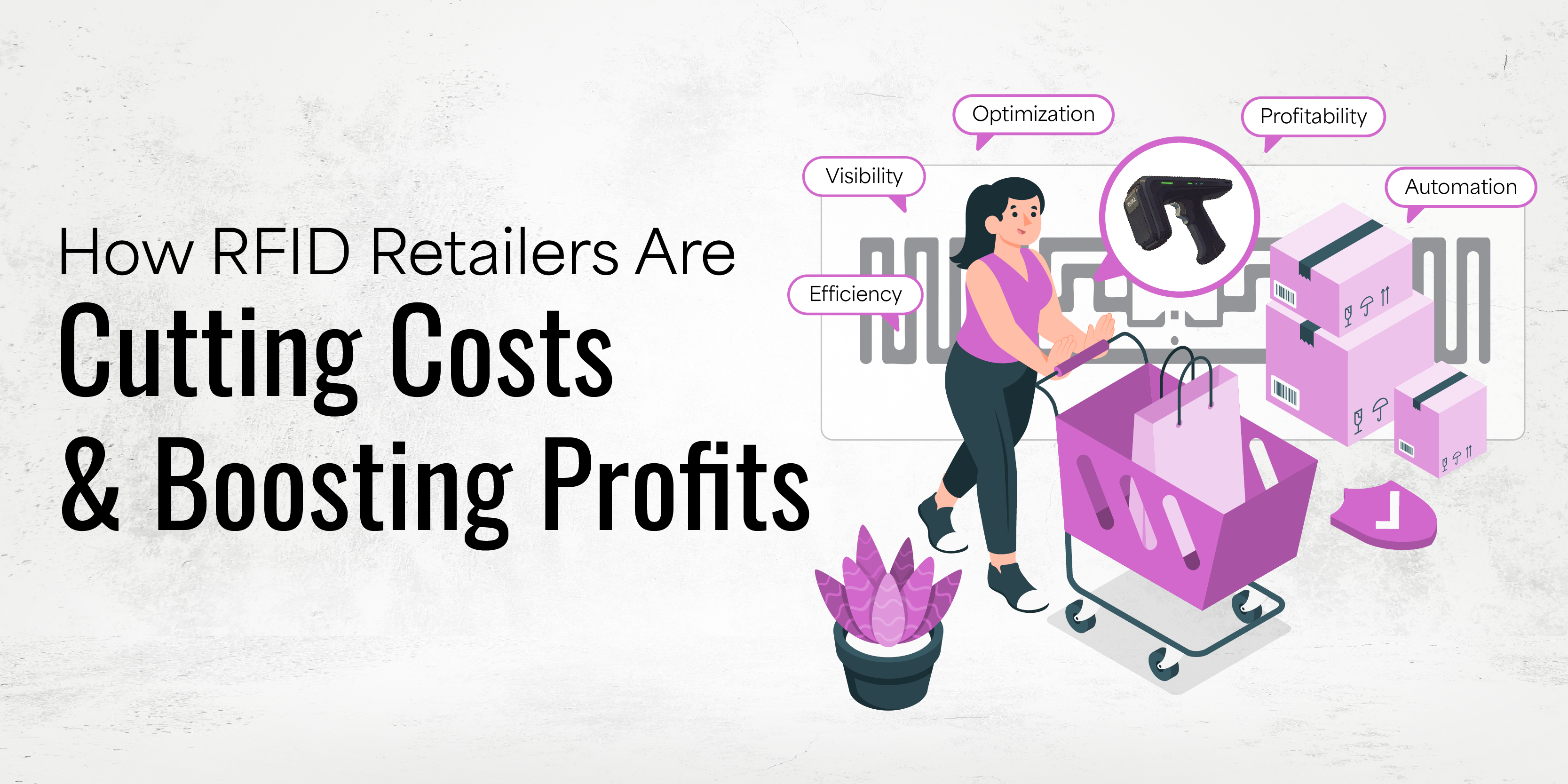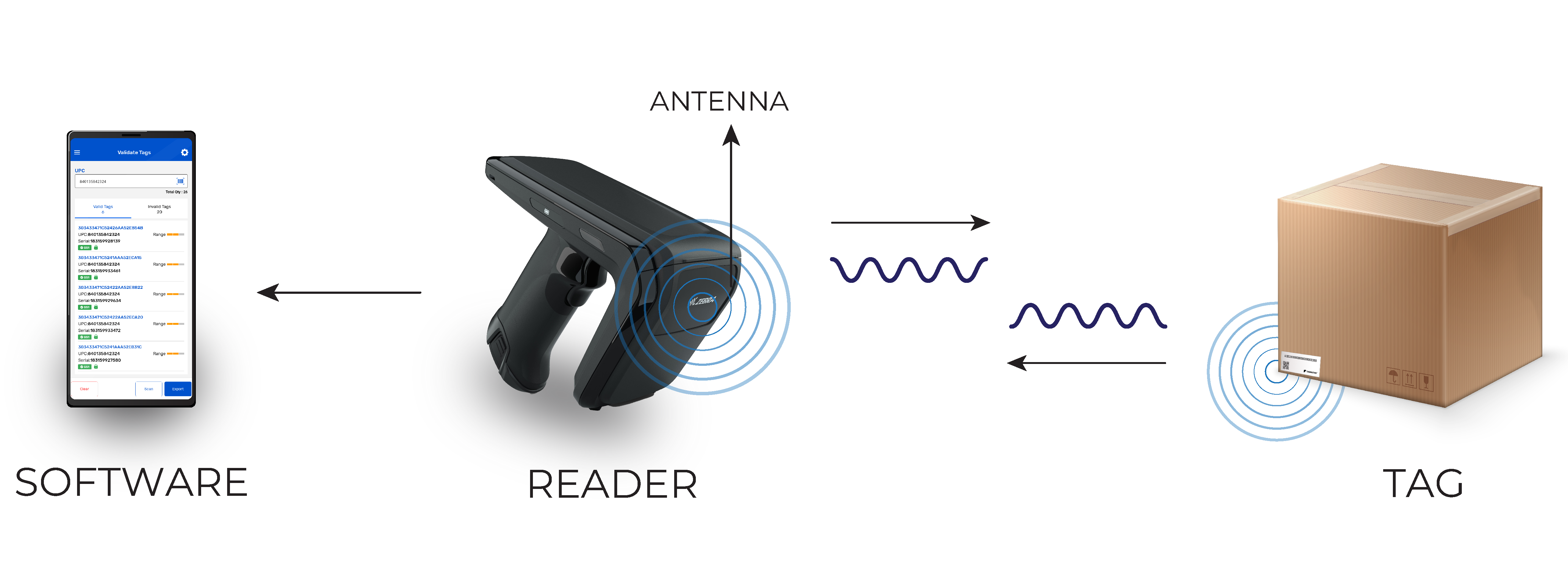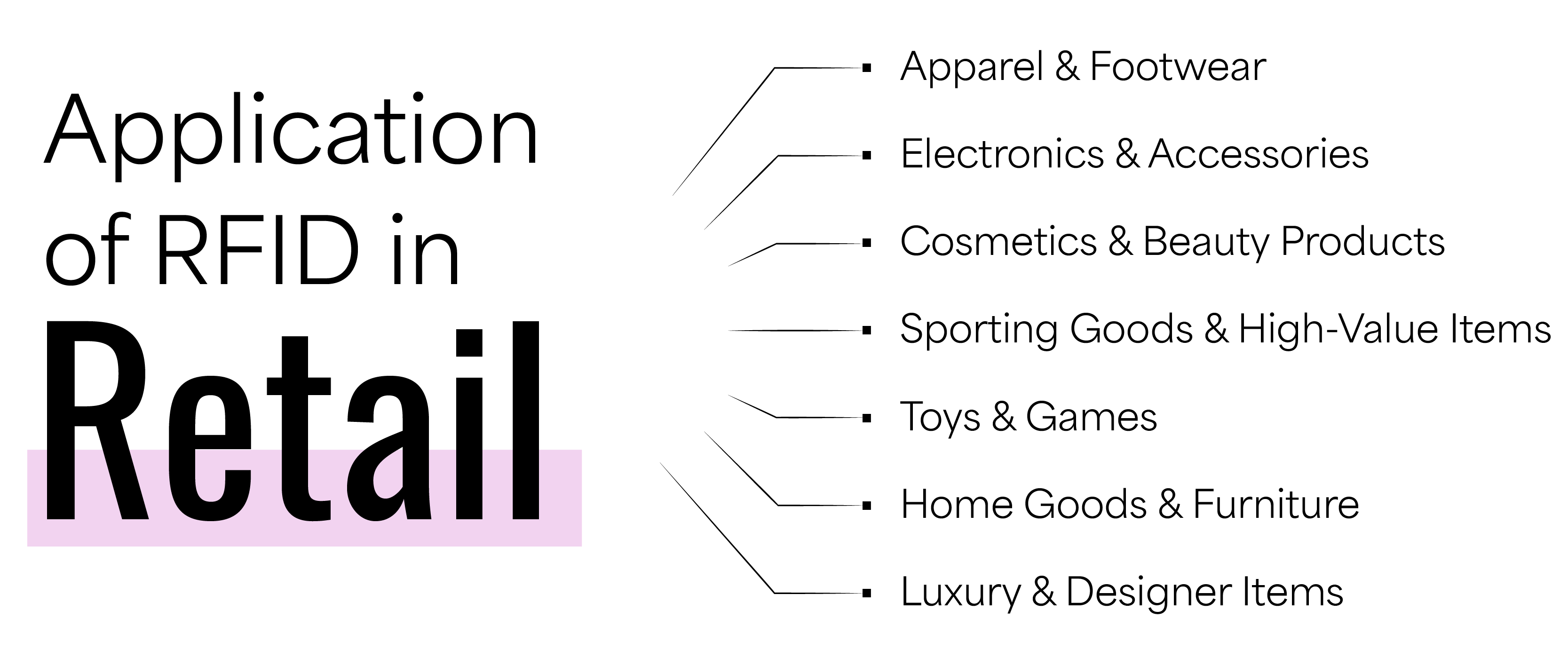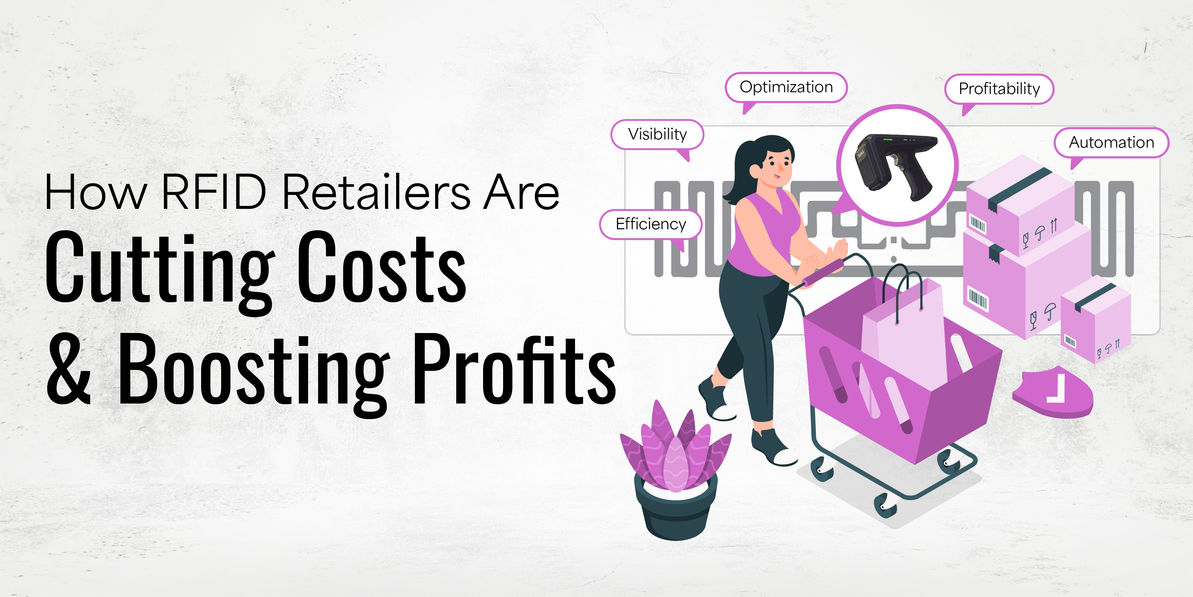How RFID Retailers Are Cutting Costs and Boosting Profits
Introduction
Retailers today are under pressure to do more with less. Rising labor costs, increasing competition, and ever-changing consumer expectations are squeezing profit margins. The good news? Technology is helping forward-thinking retailers overcome these challenges, and RFID is leading the charge.

Imagine knowing exactly what’s in stock, where it is, and how fast it's moving without ever counting by hand. That kind of real-time insight is what RFID brings to the table, empowering retailers to reduce waste, improve sales, and streamline operations from end to end.
This blog will break down how RFID helps retailers cut costs and increase profits. We’ll explore what RFID is, how it works, and real-world examples of how it's transforming retail, from the sales floor to the supply chain.
What is RFID in Retail?
How RFID Works
RFID uses radio waves to identify and track items. Each product is tagged with a small RFID chip, and this tag is read by an RFID reader—either handheld or fixed. The data collected is sent to RFID software that updates inventory and location in real time.

Read More: RFID in the Retail Industry
RFID vs. Traditional Barcodes
While barcodes require line-of-sight scanning and can only be scanned one at a time, RFID tags can be read in bulk, without direct visibility, making them much faster and more efficient.
Types of RFID Used in Retail
Passive UHF RFID: The most widely used RFID type in retail. It's highly cost-effective and offers long read ranges, making it ideal for fast, accurate, item-level tracking across large store and warehouse environments.
HF/NFC (Near Field Communication): Used in applications like loyalty programs, mobile payments, and customer engagement.
Common Retail Applications

Apparel and Footwear: Track styles, sizes, and colors effortlessly to prevent stockouts and overstock. RFID also supports faster cycle counts and seamless omnichannel fulfilment in fashion retail.
Electronics and Accessories: RFID improves traceability of high-value items and helps prevent theft. It also ensures better inventory accuracy across fast-moving tech SKUs and related accessories.
Cosmetics and Beauty Products: Ideal for managing small, high-margin items that often go missing. RFID enables precise tracking, efficient replenishment, and accurate expiration monitoring.
Sporting Goods and High-Value Items: RFID allows better inventory control over large or premium items, improves customer service, and supports theft prevention through item-level monitoring.
Toys and Games: Simplifies inventory across varied SKUs, tracks seasonal demand changes, and supports omnichannel visibility during peak sales periods like holidays and back-to-school seasons.
Home Goods and Furniture: RFID helps track bulky or customizable items in showrooms and warehouses, streamlining fulfillment and delivery coordination while improving accuracy.
Luxury and Designer Items: Supports authenticity verification, enhances customer trust, and deters counterfeiting. RFID tags stay hidden while providing detailed item-level data for exclusive collections.
Core Cost-Saving Benefits of RFID for Retailers
Reduced Labor Costs
Traditional inventory management is slow and manpower-heavy. RFID allows employees to scan hundreds or even thousands of items quickly without line-of-sight, drastically reducing the time needed for inventory counts, audits, and stock checks. This leads to significant savings in labor hours and payroll costs.
Inventory Accuracy & Shrinkage Control
Retailers often struggle with poor inventory accuracy, which results in lost sales or excess stock. RFID provides real-time, item-level visibility, helping to maintain precise inventory counts and reduce shrinkage caused by theft or misplacement. This improves replenishment and ensures products are available when customers need them.
Faster Checkout and Reduced Errors
RFID-enabled point-of-sale systems can scan multiple items at once without manual effort, making the checkout process faster and more accurate. By reducing human error and speeding up transactions, retailers can handle more customers in less time while also improving the overall shopping experience.
Optimized Supply Chain & Logistics
With RFID, retailers can monitor inventory as it moves from supplier to store. Real-time tracking reduces shipping errors, prevents stock mismatches, and ensures faster receiving. It also helps avoid overstocking or understocking, which lowers storage costs and improves inventory flow throughout the retail network.
Reduced Returns and Fraud
RFID tags support authenticity verification and tracking for each product, helping prevent return fraud and counterfeit exchanges. They also streamline reverse logistics, making returns faster and more organized—ultimately saving money in processing time, restocking, and lost inventory.
ROI and Long-Term Savings
Although RFID systems require upfront investment, the ongoing cost reductions quickly offset this. Retailers benefit from fewer stock errors, faster operations, less shrinkage, and more efficient labor use. These improvements lead to measurable long-term financial gains and a healthier bottom line.
How RFID Drives Profitability for Retailers
Improved Customer Experience
With accurate inventory, customers can find what they need in-store or online. RFID also supports features like BOPIS (Buy Online, Pick Up In Store), curbside pickup, and real-time product availability, enhancing shopping convenience and satisfaction.
Data-Driven Insights
RFID delivers real-time data on product movement, dwell times, and in-store behavior. Retailers use this to optimize shelf layouts, forecast demand more accurately, and reduce costly inventory mistakes like overstocking or stockouts.
Faster Turnover and More Sales
Improved inventory accuracy helps maintain stock availability, increasing the chances of converting interest into purchases. Higher sell-through rates mean less deadstock and greater revenue potential across multiple retail channels.
Enabling Innovation
RFID unlocks modern in-store experiences like smart fitting rooms, interactive digital signage, and basket-level self-checkout. These features not only delight customers but also differentiate the brand and encourage repeat visits.
These innovations not only streamline operations but also differentiate the brand in a crowded market.
Implementation Considerations
Implementing RFID in retail involves upfront costs for tags, handheld or fixed readers, and inventory management software like TagMatiks Retail. While the initial investment may seem significant, the long-term benefits, such as labor savings, inventory accuracy, and increased sales, quickly justify the expense.
Choosing the Right RFID Solution
When selecting an RFID solution, consider your store size, product types, and system compatibility with your POS or ERP. Cloud-based platforms like TagMatiks Retail offer scalable, user-friendly solutions that simplify deployment, making them ideal for growing businesses seeking flexible inventory control.
Future Trends: RFID and the Evolving Retail Landscape
RFID is evolving with AI for predictive inventory, improving returns management, and supporting sustainability goals. Integration with IoT devices and edge computing will enable faster, smarter retail operations, pushing the boundaries of real-time data, automation, and customer experience in the years ahead.
Conclusion
RFID is not just about tracking inventory—it’s about transforming the way retail operates. From cutting labor costs and improving accuracy to enhancing customer experiences and boosting sales, RFID delivers measurable value across the board.
Retailers who invest in RFID now are better positioned to thrive in an increasingly competitive landscape.
Read More: Why Top Retailers Are Switching to RFID
Recent Posts
-
How RFID Anti-Theft Tags Revolutionize the Retail Industry
Introduction Retail theft and inventory shrinkage are challenges that every store owner faces. Wheth …Dec 22nd 2025 -
RFID Portals in Manufacturing: Tracking Work-in-Progress Efficiently
Introduction Manufacturing thrives on precision and timing. Every part, component, and subassembly m …Dec 15th 2025 -
RF Shielding Explained: Types, Applications, and Benefits
Introduction RF shielding is essential for protecting devices from electromagnetic interference. Thi …Dec 8th 2025




